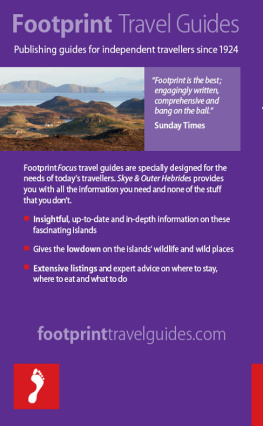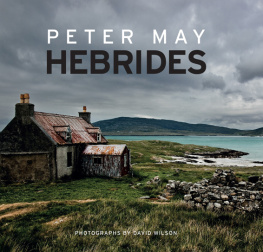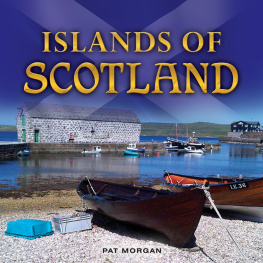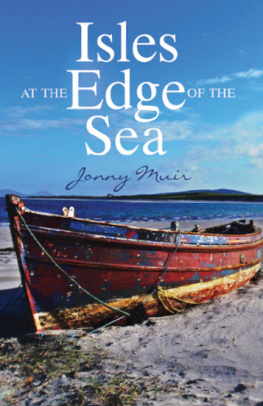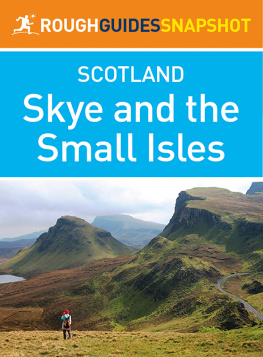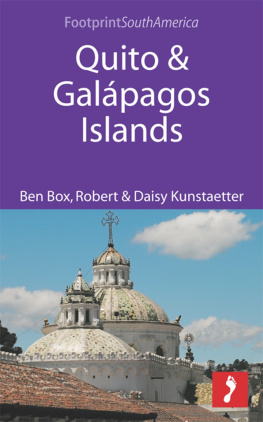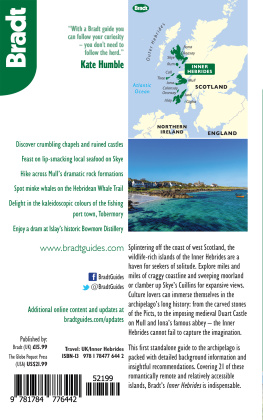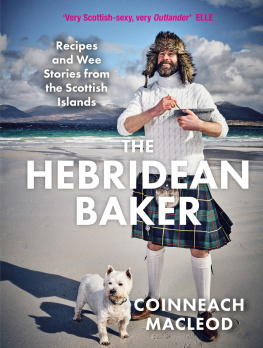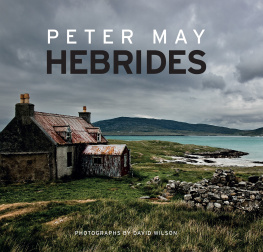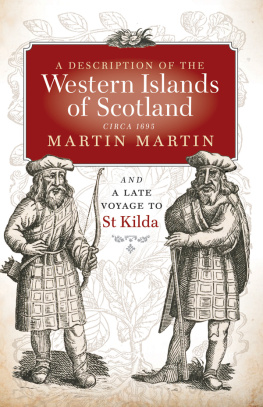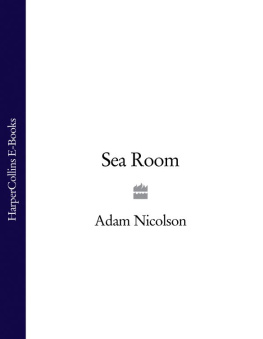Skye & Outer Hebrides
Alan Murphy
Credits
Footprint credits
Editor: Sophie Blacksell Jones
Production and layout: Emma Bryers
Maps: Kevin Feeney
Cover: Angus Dawson
Publisher: Patrick Dawson
Managing Editor: Felicity Laughton
Advertising: Elizabeth Taylor
Sales and marketing: Kirsty Holmes
Photography credits
Front cover: David Watson / Dreamstime.com
Back cover: Joseph Gough / Dreamstime.com
Printed in Great Britain by alphaset, Surbiton
Every effort has been made to ensure that the facts in this guidebook are accurate. However, travellers should still obtain advice from consulates, airlines, etc, about travel and visa requirements before travelling. The authors and publishers cannot accept responsibility for any loss, injury or inconvenience however caused.
The content of Footprint Focus Skye & Outer Hebrides has been taken directly from Footprints Scotland Highlands & Islands Handbook, which was researched and written by Alan Murphy.
Publishing information
Footprint Focus Skye & Outer Hebrides
2nd edition
Footprint Handbooks Ltd
April 2014
ISBN: 978 1 910120 18 7
CIP DATA: A catalogue record for this book is available from the British Library
Footprint Handbooks and the Footprint mark are a registered trademark of Footprint Handbooks Ltd
Published by Footprint
6 Riverside Court
Lower Bristol Road
Bath BA2 3DZ, UK
T +44 (0)1225 469141
F +44 (0)1225 469461
footprinttravelguides.com
Distributed in the USA by Globe Pequot Press, Guilford, Connecticut
All rights reserved. No part of this publication may be reproduced, stored in a retrieval system, or transmitted, in any form or by any means, electronic, mechanical, photocopying, recording, or otherwise without the prior permission of Footprint Handbooks Ltd.
Contents

The Isle of Skye (An t-Eilean Sgitheanach) is the best known of all the Scottish islands, and its spectacular combination of mountains and sea creates some of Britains most breathtaking scenery. Dominating the centre of the island are The Cuillins. These implacable mountains are the greatest concentration of peaks in Britain and among the most challenging. Skye is one of the best places in Scotland for outdoor types: it offers air, sea, land and light in their purest form and any visitor will return home physically refreshed and spiritually uplifted.
The Small Isles is the collective name given to the four islands of Eigg, Muck, Rm and Canna, lying south of Skye. Seen from the mainland, they look a very tempting prospect. Visiting these islands can be an adventure in itself, but the determined traveller will be well rewarded, particularly on Eigg and mountainous Rm, with its superb walking and abundant wildlife.
The Outer Hebrides are a narrow, 130-mile-long chain of more than 200 islands lying 40 miles off the northwest coast of the Scottish mainland. Despite the frequency of transport connections they remain remote in every sense. In many ways, the islands are the last bastion of the old Highland life and the traditional occupations of crofting, fishing and weaving still dominate. Outside Stornoway on Lewis life still revolves around the seasons and the tides.
Relentlessly battered by fierce Atlantic winds, the islands can seem a hostile environment and an unappealing proposition. Much of the interior is bleak peat bog, rocks and endless tiny lochs, and the long, straggling crofting communities only add to the feeling of desolation. But anyone who has stood on a clifftop and felt a thrill at the power and potential of all that water should come here. Nowhere else in Britain is there such a sense of the sheer forces of nature. These are islands at the very edge of our imagination.
Planning your trip
Best time to visit Skye and the Outer Hebrides
The high season is from May to September, and this is when the islands receive the vast majority of their visitors. Though the weather tends to be better during the summer months, prices for accommodation are higher, and hotels and guesthouses in the most popular places need to be booked in advance. Its also a good idea to make reservations on ferries to the islands during this period, especially to Skye. A major advantage to visiting in the summer months are the long hours of daylight.
From October to Easter, many sights are closed, and travelling around can be difficult, as public transport services are limited. Many of the smaller tourist offices are also closed during the low season. Some hotels and guesthouses close too.
The Scottish climate is notoriously unpredictable, especially on the west coast, where a bright, sunny morning can turn into a downpour in the time it takes to butter your toast. Predicting the weather is not an exact science and tables of statistics are most likely a waste of time. Theres an old saying in Scotland that if you dont like the weather, then wait 20 minutes, and this just about sums it up. The west coast receives far more rain than the rest of the country and the east coast gets more sunshine. The west coast is also milder in the winter due to the relatively warm waters of the Gulf Stream. Winters can be very harsh, especially in the mountains and glens, making hiking conditions treacherous. Winter storms also make it difficult to travel around the islands as ferry services are often cancelled.
Generally, May to September are the warmest months, with an average summer high of around 18-19C and, though they are often the driest months, you can expect rain at any time of the year. Remember the old hikers adage that theres no such thing as bad weather, only inadequate clothing.
What to do in Skye and the Outer Hebrides
Blessed with wild, rugged mountains, windswept lochs, idyllic islands and miles of remote coastline, Scotland is paradise for the visitor who comes to unwind or in search of adventure amidst breathtaking scenery. Indeed, enlightened access legislation, www.outdooraccessscotland.com, now provides almost limitless opportunities for the responsible tourist to roam freely through the countryside, cycle through miles of forest, paddle down tumbling rivers or scramble up mountains to bag Munros (mountains over 3000 ft). Furthermore, come rain, hail or shine, tour operators now offer a variety of thrilling, adrenaline-packed activities, demonstrating that Scotlands growing reputation as an adventure sports mecca is no idle boast.
Birdwatching
 Royal Society for the Protection of Birds, 25 Ravelston Terrace, Edinburgh, EH4 3TP, T01767-680551, www.rspb.org.uk. Scottish Ornithologists Club, Waterstone House, Aberlady, East Lothian, EH32 0PY, T01875-871330, www.the-soc.org.uk. Scottish Wildlife Trust, Cramond House, 3 Kirk Cramond, Edinburgh EH4 6HZ, T0131-3127765, www.swt.org.uk, which owns and runs over 100 nature reserves.
Royal Society for the Protection of Birds, 25 Ravelston Terrace, Edinburgh, EH4 3TP, T01767-680551, www.rspb.org.uk. Scottish Ornithologists Club, Waterstone House, Aberlady, East Lothian, EH32 0PY, T01875-871330, www.the-soc.org.uk. Scottish Wildlife Trust, Cramond House, 3 Kirk Cramond, Edinburgh EH4 6HZ, T0131-3127765, www.swt.org.uk, which owns and runs over 100 nature reserves.
Dont miss
Trotternish Peninsula, .
Duirinish Peninsula, .
Loch Coruisk, .
Raasay, .
The Three Chimneys

